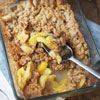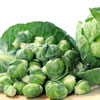Over medium heat melt the butter in a large saucepan. Add the onion and sage; saute for 5 minutes. Stir in the flour, and cook for an additional minute. Add the celery and stir well. Add the stock and stir well until mixture is blended. Bring to a boil, then reduce the heat, and simmer for 10 minutes. Stir in the apples and chives, and cook for an additional 10 minutes. Remove from the heat, and let cool slightly. Put the mixture into a food processor, reserving a few pieces of apple and celery. Blend the soup until smooth. Return to the pan, and add the reserved pieces of apple and celery. Stir in the cream, and heat through. Serve garnished with celery leaves. Makes 4 servings.



